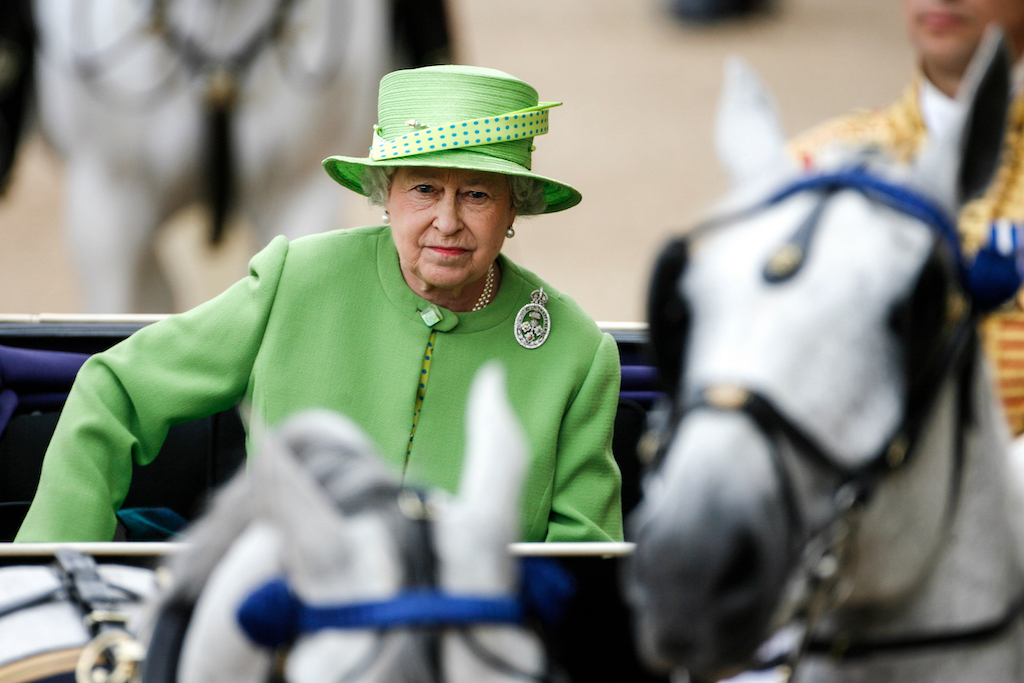 Photo Credit: Shutterstock
Photo Credit: Shutterstock
On September 8th, 2022, the world was at a standstill when Buckingham Palace announced that Queen Elizabeth II was in need of medical supervision. As royal family members flocked to her bedside at the Balmoral estate in Scotland– with other members on the way – worry began to spread. The world wondered whether the seven-decade reign, the longest-serving monarch, of Queen Elizabeth II would soon come to an end.
Shortly after 1:30 pm at Balmoral, Buckingham palace released a statement with sadness, the Queen had passed at the age of 96, “peacefully,” and with family. Although we do not know the details of her cause of death, we are aware of the Queen’s deteriorating health that started back in October 2021. Did the timeline of events start the decline of it all? Here to break it down is Haute MD expert, Dr. Deborah Houk, a board-certified Internal Medicine doctor.
October 2021: Brief Hospitalization
Queen Elizabeth was hospitalized in October of last year and her doctors recommended that she make 'lifestyle changes’ – cutting out her signature cocktail as a nightcap. There is no statement about what caused her brief hospitalization, but at this point, the Queen’s health was under watch.
It is interesting to note that the Queen's doctors recommended cutting out her signature cocktail. Likely this recommendation was part of a larger strategy to reduce the Queen’s risk of falls and cognitive impairment. As people get older, there are physiologic changes that occur. Lean body mass decreases, liver size decreases, and the ability of the kidneys to do their job of clearing the blood decreases. All of this contributes to a decreased ability of the body to metabolize and eliminate toxins, including alcohol. Moreover, as people age, they are also more likely to suffer from chronic diseases, which can leave them much more sensitive to alcohol and less able to handle even small amounts, leaving them more at risk for alcohol and medication interactions, impaired alertness, dizziness, delirium, and falls when they drink.
November 2021: Back Sprain
Remembrance Sunday in London is a major event, and with the Queen’s absence, many were on alert. As word spread, it became known that the Queen was suffering from a back sprain. It is likely her back sprain led to further health issues. Not only can a back sprain lead to worsened mobility, but it can also further decrease a patient's functional status due to pain. Pain in and of itself can be a cause of functional limitations, especially in the elderly. That, coupled with the potential need for neuroactive opioid pain medications, can also lead to further issues like delirium, constipation, and falls. Functional status is also a consistent predictor of mortality in the elderly as the loss of functional status comes hand in hand with the increased severity of numerous disease processes.
 Photo Credit: Shutterstock
Photo Credit: Shutterstock
February 2022: COVID-19
The Queen contracted COVID-19 and it was said to have “left her tired and exhausted.” When putting the factors into play, with what we knew about her health status at the time, and the effects of COVID-19 on a person in their mid-nineties, and her death about 6 months later, many wonder whether she experienced the effects of Long COVID and whether that contributed to her death.
Long COVID describes the long-term effects and ongoing health problems that some people experience after being infected with COVID-19. The symptoms can include general symptoms such as fatigue, which the Queen did experience, respiratory symptoms like difficulty breathing and cough, cardiovascular symptoms like chest pain or palpitations, neurologic symptoms like dizziness and changes in the ability to smell, gastrointestinal symptoms like diarrhea or abdominal pain, as well as other symptoms which can include joint or muscle pain.
Research about Long COVID is still ongoing, but preliminarily, according to the CDC, Long COVID is more likely to occur in people who suffered from a severe illness from COVID-19 and in those who are unvaccinated against COVID-19. Reports indicate that the Queen suffered from only mild illness due to COVID and that she was actually triple vaccinated, so Long COVID seems unlikely for her. In summary, although it is possible that the queen suffered from Long Covid, at the age of 95, it is far more likely that she didn’t have Long COVID, and her tiredness and exhaustion would be better explained by actually recovering from COVID-19 at her advanced age.
May 2022: Mobility Issues
Doctors shared that the Queen was suffering from mobility issues. As people age, mobility is an extremely important aspect of their health and longevity. Mobility issues can affect a person's ability to perform activities of daily living, which include basic activities like walking, feeding, and getting dressed. As such, mobility issues in the elderly inevitably can lead to more severe health issues resulting from falls, more frequent hospitalizations, declining functional status, and failure to thrive.
For the Queen, it is evident that her mobility issues did lead to a decrease in her overall functional capabilities. As early as October 2021, her doctors recommended that she step back from many of her responsibilities. She later was more specifically advised to only do light, seated duties, rather than those that would require her to stand, and virtual meetings rather than in-person, official visits, according to a statement from Buckingham Palace. This means that whatever mobility issue the Queen had, the impairments that resulted significantly affected her ability to function in her daily life, leisure, and work.
Many medical problems can lead to mobility issues. Since the Queen was seen walking with a cane for support, she may have had balance or gait impairments. It is known that the Queen had knee surgeries 20 years ago, and, more recently, opted not to have an additional knee surgery recommended by her doctors. Without knowing the details, these knee issues likely contributed to her mobility issues. Osteoarthritis is a very common cause of mobility issues, and, when severe, can be extremely painful and debilitating.
Many factors can lead to mobility issues, including musculoskeletal disorders like osteoarthritis and hip fractures, neurological disorders including strokes, Parkinson’s disease, and peripheral neuropathies, as well as falls, old age, and decreased physical activity.
 Photo Credit: Shutterstock
Photo Credit: Shutterstock
Spring 2022: The Beginning of the End
Queen Elizabeth II was rarely seen in the Spring of 2022, but she made a surprise balcony appearance in Buckingham Palace on the last day of the Jubilee. With the limited information that we know about the Queen's health at this point, it is clear that the Queen and the royal family would have needed to take her overall health status and goals of care into account to determine the next steps.
It is always important for doctors to understand what the patient and their families aim to achieve concerning medical interventions and therapies at all stages of life and in the context of a patient’s medical history. Knowing what we know, some priorities for the Queen may have been to reduce her risk of falls, reduce her pill burden, and reduce her pain. The issue, however, is that, at times, these goals may compete with each other, for example, we want to reduce pain, which can be done with medications. However, we also want to reduce the pill burden and risk of falls, which can both be increased with pain medications. The key at this point for the Queen would have been that she and the doctors communicate effectively and frequently, clarify and prioritize each of her goals, and use shared-decision making at every step.
September 8th, 2022: The Reign is Over
The day royal family members rushed to the Queen’s estate in Scotland, her health was in a decline. It was, in fact, the day she turned the reign over to her son, Charles, who took over immediately as King.
Before her passing, end-of-life care comes into play. As a physician, the main goals are to make patients feel better and live longer. When a patient is nearing the end of life, however, the goal of making patients feel better moves to the forefront, pushing efforts towards extending longevity to the background. In end-of-life care, helping patients feel better, increasing understanding, communicating effectively, addressing the patient’s unique wants and needs, and doing so promptly are the five biggest priorities.
With clear and frequent communication, the patient’s needs and wishes can be made known, anticipated, and addressed. Knowing a patient’s goals of care and reaching them is key throughout a patient’s life, and extremely important at their end of life. Timing is also key for the care of dying patients, as it is up to the physician and care team to recognize that a patient is nearing the end of life so that their end-of-life care can be optimized and palliative care can commence.
As the longest-standing Monarch in history, Queen Elizabeth II has been a global staple for nearly a lifetime. While the British community at large begins to mourn, a new era in global history will begin once King Charles officially takes command of the Crown.























